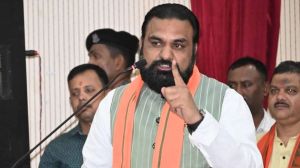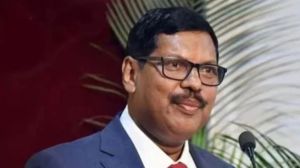Zen and the art of karate
Aashish Kuwawala is a third dan black belt in World Koshiki Karatedo Federation and a gold medalist in best fighting at the World Champio...

Aashish Kuwawala is a third dan black belt in World Koshiki Karatedo Federation and a gold medalist in best fighting at the World Championship held in Tokyo in 1994. He works on projects and therapies in health resorts and has teaching experience in National Defence Academy, St Peter’s Boarding School, Poona Club and Chaitanya Health Club.
He is also the first person to start personalised training in the Fergusson College gymnasium and is a consultant for stress management for corporates. He has participated in many national and international events, including a very unique one where his performance had a unique blend of bharatnatyam and karate.
He started learning karate at the age of 13 under Sensei Pervez Mistry, father of martial arts in India. He found his inspiration in Bruce Lee. Reveals Aashish, “When cornered by big hulks in school, I too felt like bullying them in return.”
A graduate in psychology from Mumbai, with a short stint in the film world, Aashish came to Pune. “Promoting arts in a serene educational centre is preferable to working in any commercial centre,” says he. With an experience of 22 years, Karatedo’ is an intricate part of his life as he speaks with a well-controlled voice, balanced breathing and focussed eye contact.
“Karatedo is an art. It is an expression of the soul, the mind and the self. It makes you aware of the entire cosmos. It chisels the mind and the concentration and channelises contemplation.
“Mind is a collection of thoughts. That is the difference between Buddha and the child. The child is innocent and is not aware of the mind whereas Buddha is awareness of no mind,” explains Aashish.
Karatedo means the way of the empty hands – kara is empty, te is hands, do means way of. There are three styles – no contact, full contact and hard contact. Koshiki’ means hard contact.
“We protect the target with protection.” The use of protective equipment (anzen bogu), designed on the lines of Samurai armour, allows Karatedo students to really test their advanced techniques in a safe way. This makes it enjoyable, captivating and realistic for the spectator area.
His expertise in this subject will interest you as he delves into its origin and history. “Karate belongs to India. The form of karate which we recognise today was known as Kallari Payattu’ in South India. Its origin lies in meditation. Around 1,500 years ago, a monk Bodhidharma from India travelled to China to spread the message of Buddhism, and it reached Shaolin temple. From Ukinawa, it went across to Ru Kyu islands, South of Japan. In China, this art was known as Tangte’, after the Tang dynasty. In Japan, the characters were different and so it came to be known as karate.”
The karate master also speaks about Zen, “What we call dhyan in Hindi, for meditation, was called chan and later on Zen by the Japanese.”
For a layman, the conventional black belt’ marks the end of achievement. “It is just the beginning of the art, there are 10 more degrees after it,” says Aashish, clearing a popular misconception. Belt is a tradition and a ritual.
Talking about his work on stress management, the connoisseur speaks out of his own experience and experiment, “Stress is required to thrive. One cannot live without it, but one has to learn to live with it. Happiness is not a permanent state, it comes and goes. But I believe in living life every moment. That is the essence of life”.
Although he speaks like an ascetic, he does not believe in sacrificing basic, simple joys of life. “The world is crazily into dieting. On the contrary, I think dieting makes you feel guilty,” he says humorously.



- 01
- 02
- 03
- 04
- 05




























